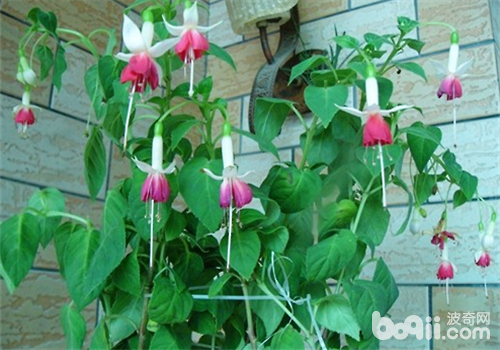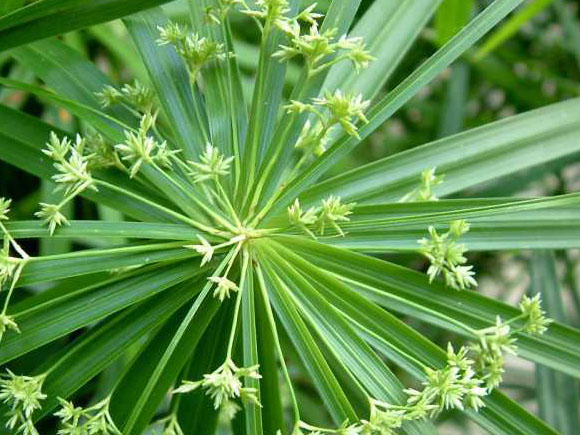How to make the Golden Bell hang upside down and spend the summer safely
Hanging gold bell upside down likes cool, ventilated and semi-overcast environment, and the suitable temperature for growth is 15-25 degrees Celsius. When the temperature exceeds 30 degrees Celsius, it will enter a semi-dormant state. At this time, it is very easy to have fallen leaves, rotten roots and other phenomena. If effective measures are not taken in time, the whole plant will die. Attention should be paid to the following points in maintenance:
(1) cooling and humidification. After summer, you need to move the flowerpot to a cool place with ventilation and shelter from rain, such as a shaded place on the north balcony, or in a place with bright scattered light indoors. At the same time, spray water on the leaves 2 or 3 times a day, and cool and humidify the wine on the ground around the flowerpot for 1 or 2 times in the summer season.
(2) controlling fertilizer and water. It is necessary to stop fertilization and control watering in the high temperature season from July to August, and the basin soil should be dry at this time. If the basin soil is often in a state of excessive dampness or muggy heat, it will lead to yellow branches and leaves, and even rotten roots and death.
(3) cultivate new seedlings. The old plant that hangs the golden bell upside down is sensitive to high temperature. However, the heat resistance of the seedlings is strong, and the leaves will not fall in the summer, so the annual cuttage seedling culture is conducive to the safety of summer.

Fuchsia
Although the appearance of the golden bell hanging upside down is quite strange, its cultivation rate in China is not low, which shows that it is very popular with Chinese people. However, most flowers and plants like the warm and humid environment, and the inverted Golden Bell is also one of them, so the key to raising the inverted Golden Bell is how to make it safe to spend the summer.
I. Environmental management of hanging Admiralty upside down to spend the summer safely
1. Cool down and ventilate. In summer, hang the golden bell upside down in a shady, cool and ventilated place. Family flower cultivation can be placed in a cool and ventilated place facing north or with a little sunlight; greenhouse cultivation should be ventilated by windows and shaded by cool gauze. Spray water to the leaves and the ground several times a day to lower the temperature and increase air humidity.
two。 Stop fertilizing and control watering. In the hot summer, because the golden bell is in a semi-dormant state, it is necessary to stop fertilization and control watering, and the basin soil should be slightly dry. If the basin soil is too wet, it will cause the leaves to turn yellow, scorch and even die.
3. Avoid the rain. After being drenched in the rain, the golden bell is easy to cause rotten roots, yellow leaves and fallen leaves. Therefore, it is necessary to cover the rain or move it indoors when it rains.
4. Plant new seedlings. Although the upside-down golden bell is a perennial plant, it is better to plant new potted seedlings every year in order to pass the summer safely in hot summer places, because the old perennial plants are less resistant to high temperature than those born in the same year.
Second, pest control of hanging Admiralty upside down in summer
1. Grey mold disease
Botrytis cinerea occurs in rainy weather or when there is too much nitrogen fertilizer or not enough light. It mainly harms stems, leaves and flowers, resulting in water-like spots on the affected parts. If it is not prevented in time, the hyphae will gradually expand and be covered with gray hairs, and in serious cases, the plants will die.
Solution: at the initial stage of the disease, 65% zinc or 50% carbendazim and other new agents with 500 times solution were sprayed every 7 to 10 days, continuously for 3 times, and pay attention to ventilation and light, so as to make the plant grow well and improve the plant's disease resistance. After the disease, the diseased branches and leaves should be cut off and treated in time to reduce the source of the disease.
two。 Powdery mildew
Powdery mildew mainly harms stems, leaves and buds. After being infected, there is a layer of white powder on the surface, which shrinks the leaves and makes the flowers smaller.
Solution: pay attention to ventilation and light, increase the application of phosphorus and potassium fertilizer, improve plant disease resistance. After the onset of the disease, spray 70% Tuobu body liquid or 2500 times liquid strychnine or other appropriate agents in time, spray every 10 days, spray 2 times 3 times continuously.
Fuchsia
3. Root rot disease
Root rot is a physiological disease, which often occurs in too much watering or continuous rainy days and hot summer, resulting in hypoxia, causing root blackening and rot, light branches and leaves wilting, and severe death of the whole plant.
Solution: after the onset of the disease, irrigate the rhizosphere soil with 50% of 300-fold solution in time. At the same time, pay attention to ventilation and cooling in summer, and basin soil watering should not be too much.
4. Fusarium wilt
Solution: 1000-fold solution of 10% antimicrobial agent 401 was applied to soil control.
5. Rust disease
Solution: spray control with 20% withered rust EC 400 times.
6. Aphids, red spiders
Aphids, red spiders and other pests mainly absorb leaves, buds and flower leaves, affecting the normal growth and development, and the whole plant dies in serious cases.
Solution: spray with 1, 000 times dimethoate solution, 10% dimethoate solution or 2000 times aphid pine solution.
It seems that the inverted Golden Bell is relatively fragile and delicate compared with other flowers and plants, but as long as we find out the growth habits of the inverted Golden Bell and do a good job in daily maintenance, we can still raise the inverted Golden Bell with fat leaves and beautiful flowers.
- Prev

How to grow and maintain the grass
The name of umbrella grass, water bamboo, water palm bamboo, windmill grass. For cyperaceae perennial evergreen herbs. Stems erect, unbranched, clustered; leaves reduced to sheathlike, wrapped around stem base. Inflorescence is borne at the top of stem, involucral bract 10~20 pieces, every 2 pieces-group up and down opposite, show radial even outspread
- Next

What conditions do you need to meet for more flowers in the upside down bell?
The bell is hung upside down and the name is Begonia. It is a perennial evergreen shrub. Racemes or panicles, flowers pendulous, sepals red, corolla purple, rose red or white, female and stamens protruding beyond flowers
Related
- Fuxing push coffee new agricultural production and marketing class: lack of small-scale processing plants
- Jujube rice field leisure farm deep ploughing Yilan for five years to create a space for organic food and play
- Nongyu Farm-A trial of organic papaya for brave women with advanced technology
- Four points for attention in the prevention and control of diseases and insect pests of edible fungi
- How to add nutrient solution to Edible Fungi
- Is there any good way to control edible fungus mites?
- Open Inoculation Technology of Edible Fungi
- Is there any clever way to use fertilizer for edible fungus in winter?
- What agents are used to kill the pathogens of edible fungi in the mushroom shed?
- Rapid drying of Edible Fungi

